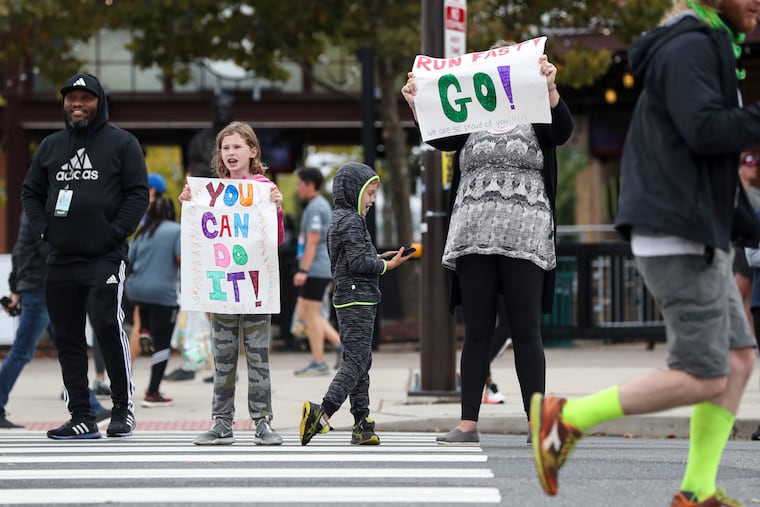Catching COVID outdoors is unlikely. So why are Broad Street Run spectators asked to stay home?
The risk of getting COVID outdoors, while small, is not zero, said David Alland, director of the Public Health Research Institute at Rutgers New Jersey Medical School.

COVID-19 fears have sent home the cheerleaders for this Sunday’s Broad Street Run.
While other big races welcomed observers back in recent months, Philadelphia’s iconic run has discouraged people from gathering along the 10-mile course — despite guidance that outdoor gatherings tend to be safe. Only runners, event staff, and emergency personnel will be allowed at the start and finish line areas.
Families and friends of runners are encouraged to watch the race live on NBC10 instead.
» READ MORE: Everything you need to know about the 2022 Broad Street Run
Why are spectators discouraged from attending?
Maita Soukup, a spokesperson for the city’s Department of Parks and Recreation, said the run’s sponsors and organizers created the health and safety guidelines “out of an abundance of caution, with the goal of protecting runners and preventing the spread of infection.”
They hope to bring back spectators, Cheer Zones, and kids events “with open arms” for the May 2023 run, Soukup wrote in an email.
Is outdoor transmission of COVID-19 a concern?
The Centers for Disease Control and Prevention say that you are less likely to be exposed to the virus outdoors, even if you aren’t wearing a mask.
“In general, people do not need to wear masks when outdoors,” the CDC writes.
However, the agency does still recommend avoiding crowded places where people can’t stay at least 6 feet apart from others, according to its guidance on large and small gatherings last updated in January.
» READ MORE: A field guide to 6 species of Philly runners at the Broad Street run
The risk of getting COVID outdoors, while small, is not zero, said David Alland, director of the Public Health Research Institute at Rutgers New Jersey Medical School.
Outdoor transmission is not as common, Alland said, because COVID particles are diluted in the air. But a number of factors can affect that dilution, including the size of the crowd, whether people sing or yell, and how much wind there is.
“In general, outdoor gatherings are safe, and I would expect that in most circumstances, they should be allowed,” he said. “But in circumstances where there’s a lot of crowding ... it’s a reasonable thing to decide that it’s not appropriate.”
William Schaffner, an infectious diseases expert at Vanderbilt University Medical Center, noted that most studies on outdoor transmission were done before the omicron variant emerged.
So outdoor transmission can’t be ruled out as a concern, he said.
“We know that omicron and its subsequent strains, variants, are extraordinarily contagious,” Schaffner said.
Alland also points out that we’re mostly “extrapolating” based on experiences with past variants.
With an uptick in cases due to omicron subvariants, “there are reasons to be moderately concerned,” Alland said.
Are other cities taking this type of precaution?
Philadelphia itself didn’t even take this precaution for the marathon in November. Countless spectators gathered along the route, and they were strongly encouraged (but not required) to wear masks.
Schaffner said he hasn’t “seen this sort of discouragement” anywhere else in the country.
In Boston, for instance, thousands of people gathered along the Boston Marathon route less than two weeks before the Broad Street Run. Boston’s spectator guide did not lay out any particular COVID precautions.
Staff writer Tom Avril contributed to this article.